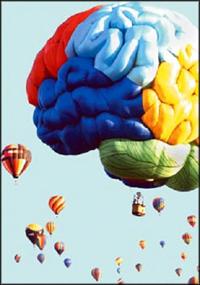CED505.20 Fall 2011

Description: Instructional Strategies
Image copyright: http://www.google.com/imgres?q=instructional+strategies&hl=en&client=firefox-a&hs=TUN&sa=X&rls=org.mozilla:en-US:official&biw=1920&bih=875&tbm=isch&prmd=imvns&tbnid=uahdDxfANiDERM:&imgrefurl=http://ja
1. Explicit Teaching
http://olc.spsd.sk.ca/de/pd/instr/strats/explicitteaching/index.html
Explicit teaching is defined as directing student focus toward specific learning in a very structured environment. The teaching focuses on specific learning outcomes. Material is taught in a logical order as directed by the teacher. It involves teaching in small parts, modeling skills and thinking by the teacher, and requires a high level of student attention.
Although I do not recall ever seeing this term used, it does reflect to a high degree how some of my class instruction is conducted. Demonstrating a skill or material and “walking” students through the steps involved is not an uncommon component of teaching in younger grades.
2. Jigsaw
http://olc.spsd.sk.ca/de/pd/instr/strats/jigsaw/index.html
Jigsaw is a cooperative learning strategy. Students are divided into groups and individual members of each group are assigned a part of the material. The individual members of the various groups regroup with other members from other groups assigned the same portion of the material. Then the original groups reform and the members teach their material to the home group. This procedure develops teamwork and cooperative learning skills.
As an example of how I could use this in my classroom, let me use the life cycle of a butterfly. Students would be broken into home groups, and one student in each group could be assigned a portion of the life cycle. The students from all home groups assigned to a particular segment of the life cycle would meet, study and prepare a report for their home group. Students would then reconfigure as a home group and report to each other the various parts of the life cycle.
3. Probable Passage
http://olc.spsd.sk.ca/de/pd/instr/strats/probable/index.htm
Probable passage is a learning strategy designed to improve comprehension, develop an awareness of story structure, and enhance vocabulary development. This strategy involves a pre-reading activity introducing vocabulary and interest students in reading. Words or phrases from a story that reflect the characters, setting, etc. are selected. Students work collaboratively to create a prediction statement about the story.
This would probably not be a strategy suitable for my class due to the wide variation in reading levels (from learning letters to substantially beyond grade-level readers). In a more homogeneous group of pre-readers or early readers, this would seem to be an engaging group activity.
4. Synectics
http://olc.spsd.sk.ca/de/pd/instr/strats/synectics/index.html
Rather than try to rewrite the summary in the above link, let me quote:
“Synectic thinking is the process of discovering the links that unite seemingly disconnected elements. It is a way of mentally taking things apart and putting them together to furnish new insight for all types of problems. It is a creative problem solving technique which uses analogies.”
I do not claim to fully understand the description of this teaching strategy, but I’m sure someone at M.I.T. does. It would not really be appropriate for my classroom.
5. Scaffolding
http://olc.spsd.sk.ca/de/pd/instr/alpha.html
Scaffolding is an instructional strategy in which the educator models the learning strategy or task, but then slowly shifts the work to the student. It provides an aid for students who are not yet ready to complete a task on their own.
This is also a component of teaching in my class, where I have a diverse group of students. Many of them need individual attention and assistance in order to make progress.
6. RAFT
http://olc.spsd.sk.ca/de/pd/instr/strats/raft/index.html
RAFT stands for Role, Audience, Format and Topic. It describes a technique to assist students in understanding the role of the writer, the audience to be addressed, a description of the format the writing will take and the anticipated content. This instructional strategy is intended to provide students different ways to think about their writing.
This strategy is in some ways similar to that employed to teach young students early writing skills, looking at subjects, verbs, etc. It would be used with older students, and can require students to take the role of a person other than themselves to create a different writing perspective. It can also be used collaboratively with groups of students.
7. Graphic Organizers
http://olc.spsd.sk.ca/de/pd/instr/strats/graphicorganizers/index.html
Graphic organizers involve a strategy that employs visual symbols to express ideas, concepts and to convey meaning. Like a map, it is a visual tool that visually shows the relationships between facts, terms or ideas in a learning task. Graphic organizers are a visual aid to instruction.
Although described as an instructional strategy, the use of visual aids is frequently a part of classroom instruction. Teachers use visual representations across varied subject areas, as part of regular instruction and learning. I still use a very traditional overhead projector in my classroom, since my district’s technology is still very twentieth century.
******************************* END *******************************************
